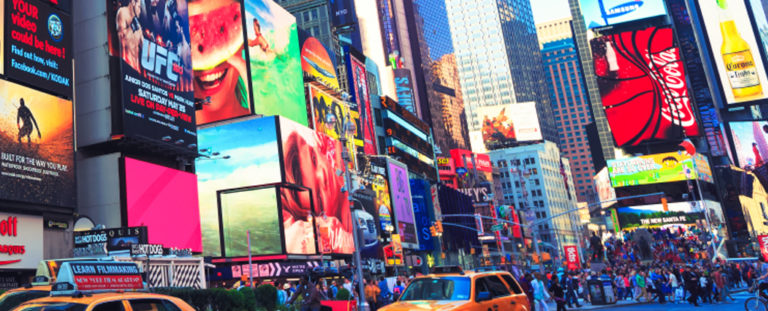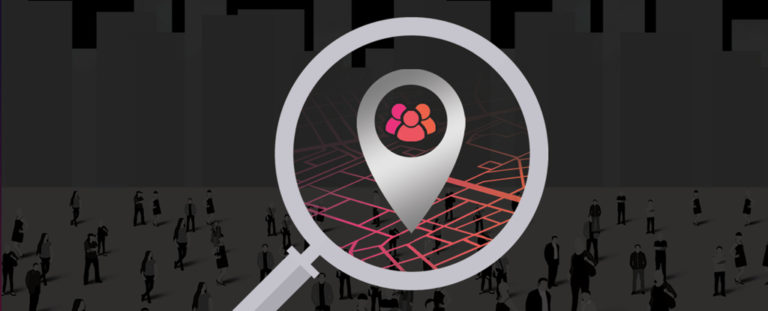The evolution of taxi and rideshare car-tops
Published: April 7, 2021
You may have recently read the news about Uber OOH coming to New York City. Through a partnership between Uber, Metropolitan Taxicab Board of Trade (MTBOT), and Creative Mobile Media (CMM), Uber OOH will have access to up to 3,500 taxicabs to display advertising on top, representing over 25% of the total taxicabs in the city.
In light of this recent development, let’s take a trip down memory lane and see how taxi tops have evolved throughout the years:
If you saw a taxi before the 1970s, chances are it was just a plain taxi with no advertisements on it whatsoever (other than the taxi company’s name). From the early 1900s, when taxi cabs were invented, to the late 1900s, no one had capitalized on the idea that there was a secondary income stream to explore. From the 70s to today, cartop/taxi advertisement signage has evolved into a huge marketplace. With digital screens, internet capabilities, and programmatic buying, these signs have made significant moves forward in the digital out of home world.
1976
The very first taxi top advertisements started appearing in large cities such as New York and Las Vegas. The position of the signs on the top of cars provided optimal viewing height for the public on the sidewalk, unlike ads placed on the side of cars which weren’t visible through heavy traffic.
(image source: Wikipedia)
1980s
Continuing with the “Toblerone” shape, ads had to be short, bold, and to the point, as they were displayed on a moving target with limited space available. Most taxi tops were backlit with small light bulbs inside so ads could be seen any time of day.
(image source: Car and Classic)
1990s
Vinyl was primarily being used for graphics on the taxi tops, with the design and style remaining unchanged. Increased popularity continued to grow due to the low CPM which could be figured into nearly any brand’s budget
(image source: The Welcome Blog)
2000s
Equipment stayed relatively the same but the taxi tops remained an excellent opportunity for advertisements to reach the masses at a fraction of the cost of static billboards.
(image source: Flickr)
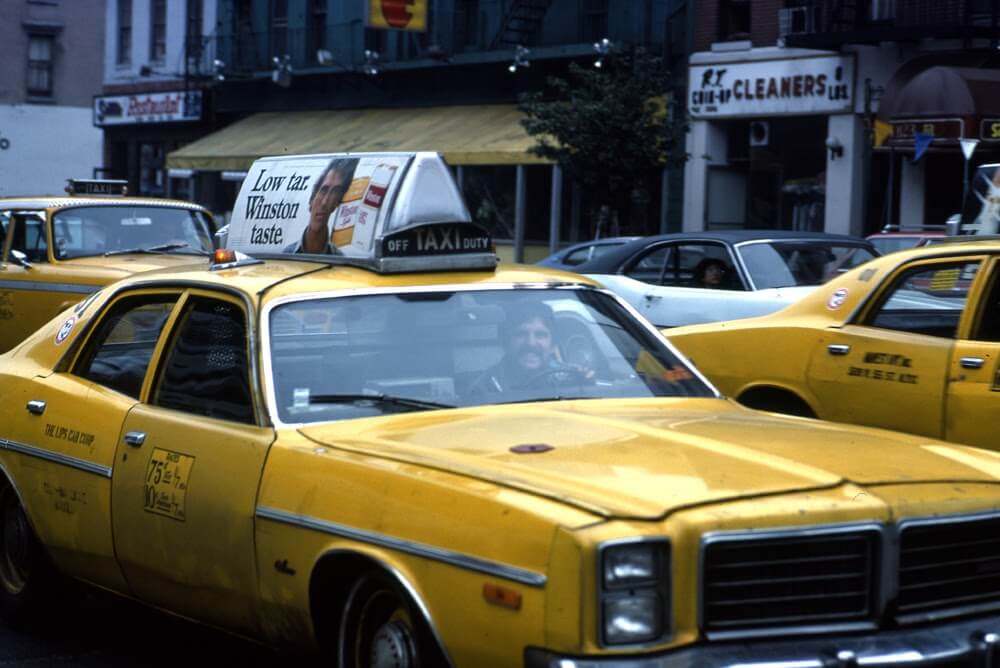
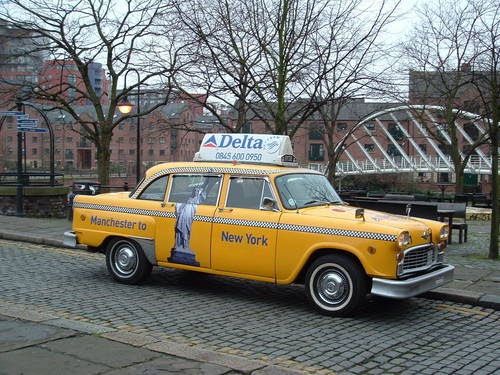
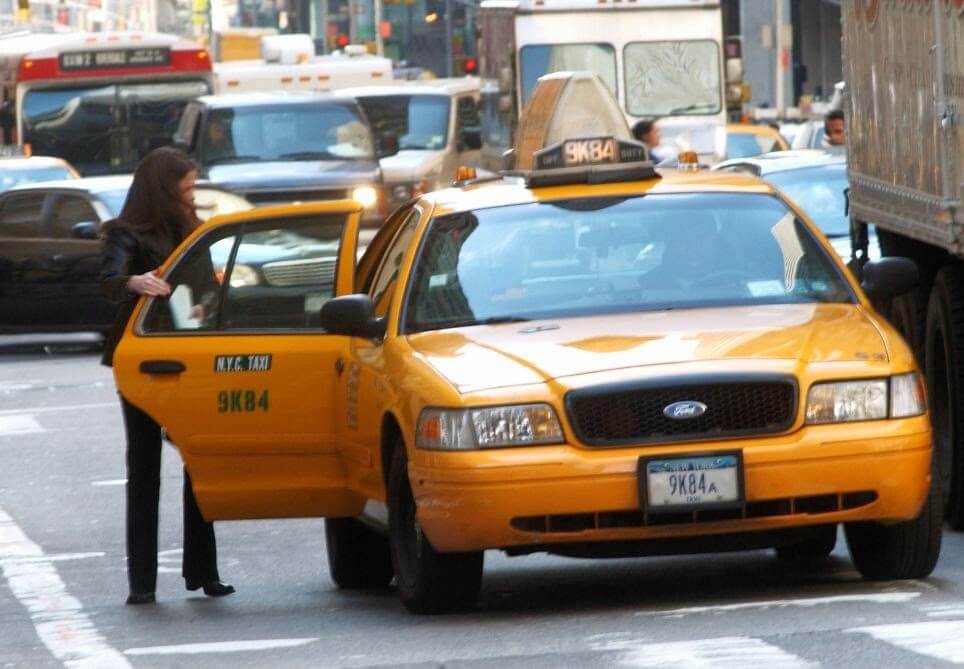
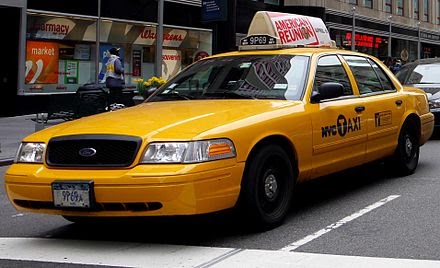
2003 marked the first year that taxi tops entered the digital world.
While static continued to rule the taxi top industry for years ahead, companies like Clear Channel Outdoor and Adapt Media worked on developing digital screens that would eventually pave the way for others. (image source: OOH Today)
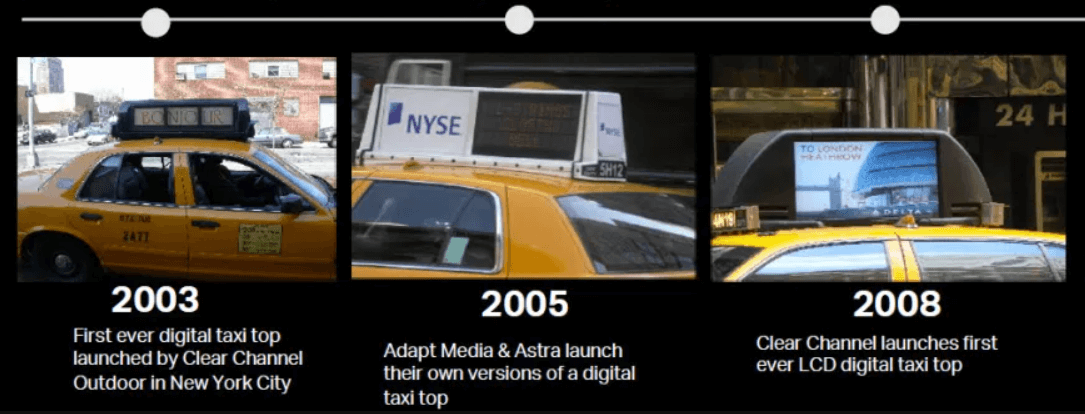
2010s
Digital printing allowed for design, color, and photos to be easily printed and installed onto the signs. With the presence of the internet and social media, cartop ads were seen as a “prompt” to encourage viewers to investigate the brand or messaging further on their own. Brands began to use taxi top ads not only for brand awareness but also for a call to action.
(image source: Bluemap Design)
2014
Verifone launched the first-ever Smart LCD digital taxi top network. Soon after, internet connectivity allowed for advertisers to serve dynamic content as well as change their message on-screen throughout the day or in specific neighborhoods as the vehicles traveled throughout the city.
(image source: Behance)
2018
The rise of ridesharing services like Uber and Lyft created new opportunities for companies to approach drivers and install static and digital screens to the top of their vehicles. Drivers would get paid for having the cartop on while they traveled throughout the city.
(image source: Firefly)
2020
Uber OOH powered by Adomni, the official Uber advertising network, entered the DOOH space by outfitting drivers on the Uber platform with dual side, video-enabled screens. The network initially launched in Atlanta, Dallas, and Phoenix and recently activated Boston and Los Angeles. There are plans to activate another 5-7 markets before the end of 2021.
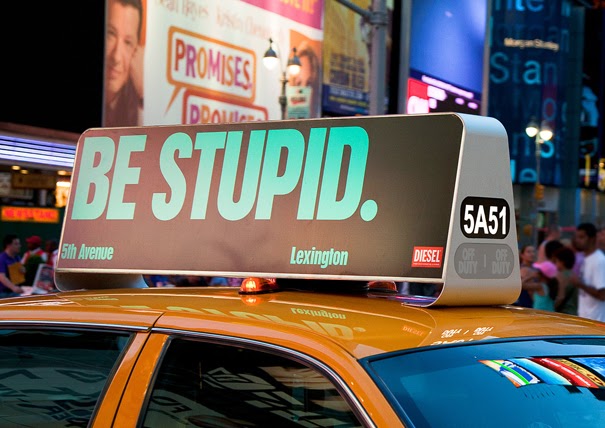
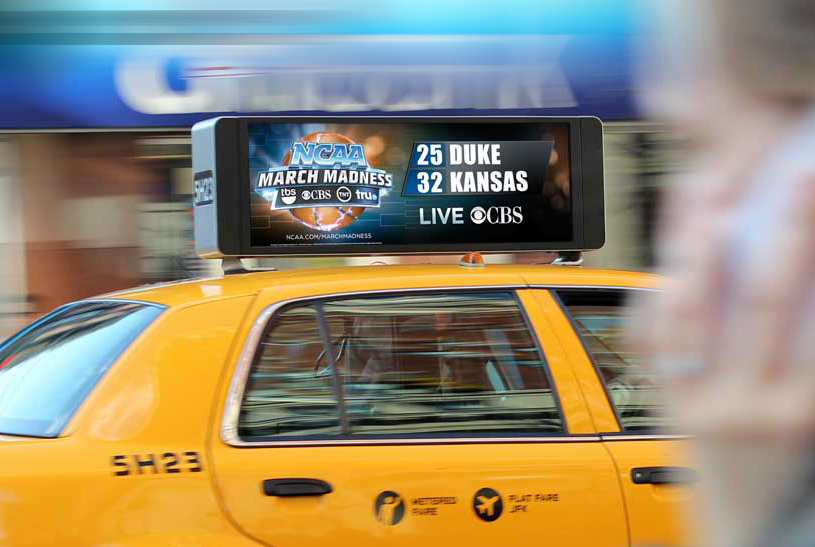
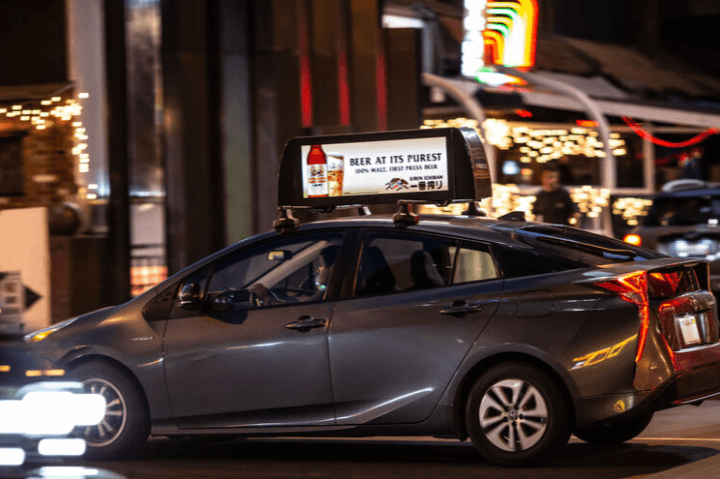
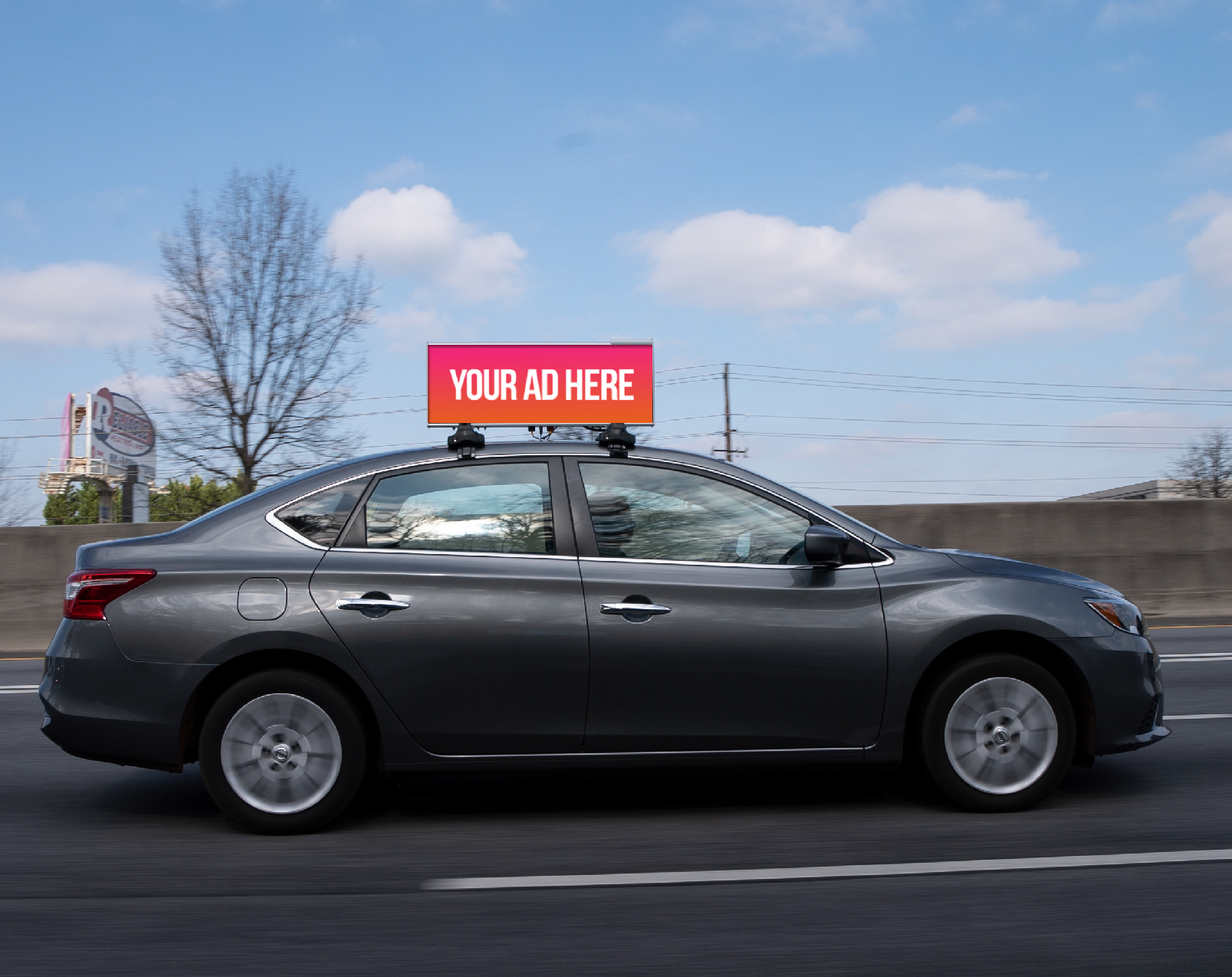
In May 2021, newly digitized taxicabs will begin appearing on the streets of NYC. With 3,500 cabs, Uber OOH will provide marketers with unprecedented NYC coverage and is targeted to grow to over one billion monthly ad impressions in 2021. This means 1 in 4 cabs in the city will be a part of the Uber OOH network. Pair that with the other 11,430 NYC digital screens programmatically available for purchase on Adomni, and you have a true NEW YORK CITY TAKEOVER!
If you would like more information about Uber OOH or Adomni, reach out to our sales team today at sales@adomni.com
Written By: Shane Hutton
To get the latest updates on out of home advertising, digital marketing and technology, follow us on:
Or sign up for our newsletter.




